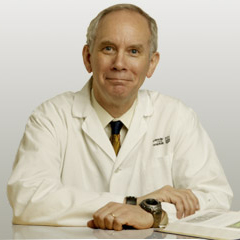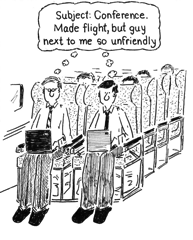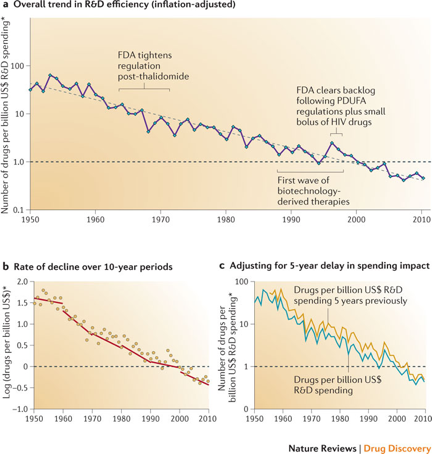Imagining The Digitally Enhanced World That Would Exist If 9/11 Had Not Happened, And Reconsidering the Link Between Our Future and the Future of Digital Pathology
A little over a year ago I wrote a piece entitled “No Approval Necessary” that talked about how blogs written by physicians are one of the few venues we have as highly regulated and scrutinized professionals in our daily lives and in terms of publications to write what we want without a typical peer-review process. What you type, you own, no safety net, sounding board or editorial process, good or bad, what exists after you hit the “Publish” button is published. Instant. Not 6 weeks or 6 months of discussions, reviews or editorial re-writes and reviews.
It is true of the entire blogosphere, regardless of industry or blogger. Few of us if any ever considered submitting a piece written for one’s blog the opportunity to be vetted and analyzed for relevance, historical importance, thoughts, result analysis and conclusions.
This basic premise has changed. Dr. Kim Solez kindly submitted his manuscript below on “Imagining The Digitally Enhanced World That Would Exist If 9/11 Had Not Happened, And Reconsidering the Link Between Our Future and the Future of Digital Pathology” to this blog for peer-review. Not by me alone, but rather by a review board of peers within pathology and pathology informatics at other medical schools and departments of pathology.
Why shouldn’t blog posts have the capability for peer-review as an assessment of scientific importance within a chosen field?
Furthermore, this may pave a road for such writings and contributions to readers all over the world as another measure of “academic productivity” for such positions that require metrics to assess promotion and award status.
Such writings would qualify for a couple of key components to measure its worthiness to the literature: 1) Original work submitted by the author(s) and not otherwise submitted for publication elsewhere 2) Peer-review by like-minded individuals within the respective fields or disciplines and 3) the opportunity for the readers to comment to the respective publication and author(s) in terms of support of disagreement for their findings, conclusions or musings.
Topics of interest to the pathology public may have such a narrow scope as to be excluded from traditional pathology journals but could contribute to the body of knowledge if provided another venue. Such as a blog. So with that, please enjoy what may be the first peer-reviewed blog post. My personal thanks to Dr. Kim Solez for the submission and to our editorial board of six who reviewed the manuscript professionally and promptly.
Imagining The Digitally Enhanced World That Would Exist If 9/11 Had Not Happened, And Reconsidering the Link Between Our Future and the Future of Digital Pathology – Kim Solez, M.D.
Today, I want to talk to you about a different kind of infrastructure project. …. It is called “Connecting Canadians.” (The goal is) to make Canada the most connected country in the world within the next 2.5 years. …. A new National Dream for a new millennium. Jean Chretien – address delivered to the Federation of Canadian Municipalities, Regina, June 8, 1998. Canada’s IT Goal: The World’s Most Connected Country. Canadian Speeches. 12(4) 1998. p 35.
Everything we’ve fought for, for so long, is gone now. The world is going to be a very different place. – Jean Chretien (After seeing collapse of the first World Trade Center tower on September 11, 2001)
Time in the digital age can seem like a very squishy concept, something like nailing Jell-O to a wall. Singularity Weblog some months ago removed dates from all of its essays, so now no one could distinguish those essays written yesterday from those written three years ago without clarifying the timeline by a careful analysis of the archives. No one complained. Does the fact that the essays seem so interchangeable over time suggest that the field of Singularity studies is going around in circles, or that change has not occurred? The discovery last month that Norbert Weiner made statements in the introduction to his 1947 Cybernetics book that are spot on with respect to the plan to replace one million Foxconn human workers by robots in 2013. The long dwell time between pronouncements about technology and its occurence leads one to wonder whether in certain respects technology roll-out timelines simply stand still.
On the other hand, there are tipping points, and what a difference four days made in 2001! On September 7th, 2001 I was presenting at the “Smart, Sexy, Healthy” Think Tank session organized by the Banff New Media Centre in Banff Canada. The full text of the presentation and my PowerPoint file are still online . The most interesting part is slide 41 which reads:
Postscript: Connectedness, Canada, and You! Prime Minister Jean Chretien has vowed to make Canada the most connected country in the world. Next month Air Canada offers broadband connectivity in the air even in economy class! Two million Canadians have broadband connectivity at home (6% of the population of 31 million), compared with eight million people in the US (3% of the population of 285 million).Based on Prime Minister Chretien’s plan announced three years before, Canada was poised at that moment to become the most connected country on earth and ubiquitous WiFi on planes was an important part of that commitment.
In 2000, Boeing had launched a business called Connexion to bring high-speed Internet access to the commercial airline industry. Boeing partnered with a number of airlines including Air Canada in this venture, but the timing — spring of 2001 — couldn’t have been worse. Following the terrorist attacks of September 11, 2001 every airline pulled out of the venture except for Germany’s Lufthansa. There were also major technical hurdles in deploying the service: Each plane had to be outfitted with antennas that cost half a million dollars, took several days to install (adding to the cost through lost revenue) and created an estimated 800 pounds of drag. In 2006, Connexion called it quits and abandoned the project. The several US airlines which started in-air WiFi in 2010 did so using an entirely different technology. Eleven years after the ironic Fall 2001 announcement Air Canada still does not have onboard WiFi. So much for the optimism of September 7, 2001! It is important to understand that such an extended dwell time between the proclamation of a social or technological change and its actualization is typical, it almost always much longer than the adoption time estimated by the change’s proponents. Then after some trigger event occurs (the tipping point) the transition to wide adoption occurs at a breath-taking speed. The course of such events follows a typical “S”-shaped curve. From a marketing principle standpoint the delays described above are not astonishing, but expected.
WiFi on commercial aircraft is just one of many technologies set back ten plus years by the attacks of September 11, 2001. Digital pathology was also a victim. Aperio was founded in 1999 and was just beginning to hit its stride as a company when the attacks of 9/11/2001 hit.
The reader may ask how an author from Edmonton could have any special insights into the effects of 9/11/2001. After all Edmonton is the only major city in Canada that does not hug the US border and appear on US maps. It may surprise you to know that Faultline 49 a fictional account of a 9/11 like attack occurring in Canada is set in Edmonton!
Homo Evolutis author Juan Enriquez in his recent presentation Immortality, Big Data, and Tattoos has pointed out that our extensive digital footprint online gives us all a new kind of tattoo which provides us with a kind of immortality already in 2012. It is worth emphasizing that this online record is not only a record of things we have done, but also a record of the things we planned to do, but never followed through on, like the many plans of all sorts that were abandoned after 9/11/2001, including those in the digital pathology realm.
In seat Internet on aircraft will not be/is not without problems. It will potentially profoundly change to social experience of traveling by air as the cartoon below illustrates.
There are some startling anomalies time-wise in our current reality. These may have nothing to do with 9/11 effects; they may just be the way things are. Most are familiar with Moore’s Law of price performance of computing and exponential change which is one of the key background assumptions of Singularity theory. But did you know about Eroom’s Law (Moore’s spelled backwards) showing the exponential decrease in number of new drugs approved by the FDA per billions of R&D spending? Soon we will not be able to afford any new approved drugs at all!
In a recent Skype presentation in the Technology and Future of Medicine course well known sociologist James Hughes has pointed out that there is almost no job in our society immune to replacement by automation over the next decade and it is not certain where the new jobs will come from. There may be a ten to fifteen year gap between the point at which there are massive job losses due to automation and the point when the post scarcity world of abundance brought about by technological advances kicks in. A lot of bad stuff could occur in that gap!
We may decry the slow rollout and adoption of digital pathology, but make no mistake about it: after helping us in amazing ways for a long time digital pathology will eventually replace us. Machines will be come better at reading pathology slides than human beings, just as they will eventually become better than humans at all other tasks. So on the one hand digital pathology stands poised right now to make our lives as pathologists better and more precise in every way. But in the long run digital pathology machines will replace flesh and blood human pathologists.
It is time to step back and look at the big picture. Another important aspect of my presentation of September 7th, 2001 is the use of FrogDot’s red rope symbolism in 3D images in slides 19-33 as an analogy of the way the Internet connects us worldwide over both space and time. These newer images below from the same artist just below carry this idea even further even as far back as the original big bang that started the universe. The analogy to ubiquitous digital pathology is obvious. Is the idea of digital pathology also ultimately timeless? Was the potential always there but only realized recently? Where would digital pathology be today if the attacks of September 11th , 2001 had never occurred, how enhanced would it be over the reality of late 2012. Would every case in the developed world be digitized by now? What would we be doing with all this quantitative data? Who would be practicing pathology, us or machines? It is interesting to think about these questions!
 Kim Solez, M.D., FRCPC is Professor of Pathology at the University of Alberta, and President and CEO of Transpath Inc., is one of the world’s foremost kidney pathologists and medical Internet leaders. Kim has also created many educational videos for the Lifeboat Foundation.
Kim Solez, M.D., FRCPC is Professor of Pathology at the University of Alberta, and President and CEO of Transpath Inc., is one of the world’s foremost kidney pathologists and medical Internet leaders. Kim has also created many educational videos for the Lifeboat Foundation.
He is a popular blogger on internetevolution.com, and directs NKF cyberNephrology, a joint venture of the National Kidney Foundation (U.S.) and the University of Alberta. He is the father of the Banff classification which sets standards worldwide for how biopsies from kidney and other solid organ transplants are interpreted, and started the post earthquake disaster relief task force of the International Society of Nephrology.
Having held leadership roles in medicine and technology for over 20 years and directed major music and arts events, Kim is convinced that very useful cross fertilization can come from mixing these disciplines.
Kim coedited Solid Organ Transplant Rejection: Mechanisms, Pathology, and Diagnosis, and coauthored International standardization of criteria for the histologic diagnosis of renal allograft rejection: The Banif working classification of kidney transplant pathology, Costimulation Blockade with Belatacept in Renal Transplantation, Banff 2003 Meeting Report: New Diagnostic Insights and Standards, Telomere Shortening in Kidneys with Age,IFN-γ Alters the Pathology of Graft Rejection: Protection from Early Necrosis, and Prevention of chronic kidney and vascular disease: Toward global health equity — The Bellagio 2004 Declaration.
As we plunge headlong into an increasingly intimate embrace with technology, and “merge” more and more with our electronic devices, understanding the relationship between ourselves and machines becomes more important. Can this ever closer association possibly be a good thing? Digitality presents a worldview in which this coming together of humans and machine will be a fun and surprising experience, replete with meaningful life experiences that we wouldn’t have thought possible without technology. Digitalitypresents a future where technology augments our most human features and reveals surprising things about the human psyche.
Digitality is different from other technology books in that while the subject matter is quite metallic, the medium is very humanistic, as is the overall outlook. Kim presents a worldview in which the artificial and real are intertwined with one another, and rarely as discrete as many assume. Technology, he argues, is in many ways making us more human. No other popular books take quite as optimistic a position on the matters of human being-technology relations, or in as creative a way.
The Canadian iconic poet/singer/songwriter Leonard Cohen called Kim a “great master of the surreal” juxtaposing things others would never think of juxtaposing. Kim hopes that by putting things together in new ways he can stimulate people to think about the future and our increasing association with machines and devices in a new more positive way.
Read his LinkedIn Profile. Follow his Twitter feed. Watch SolezAwardand PAHSNepalFundRaiserSolez. Read We Need to Study Human-Web ‘Co-Evolution’.








































